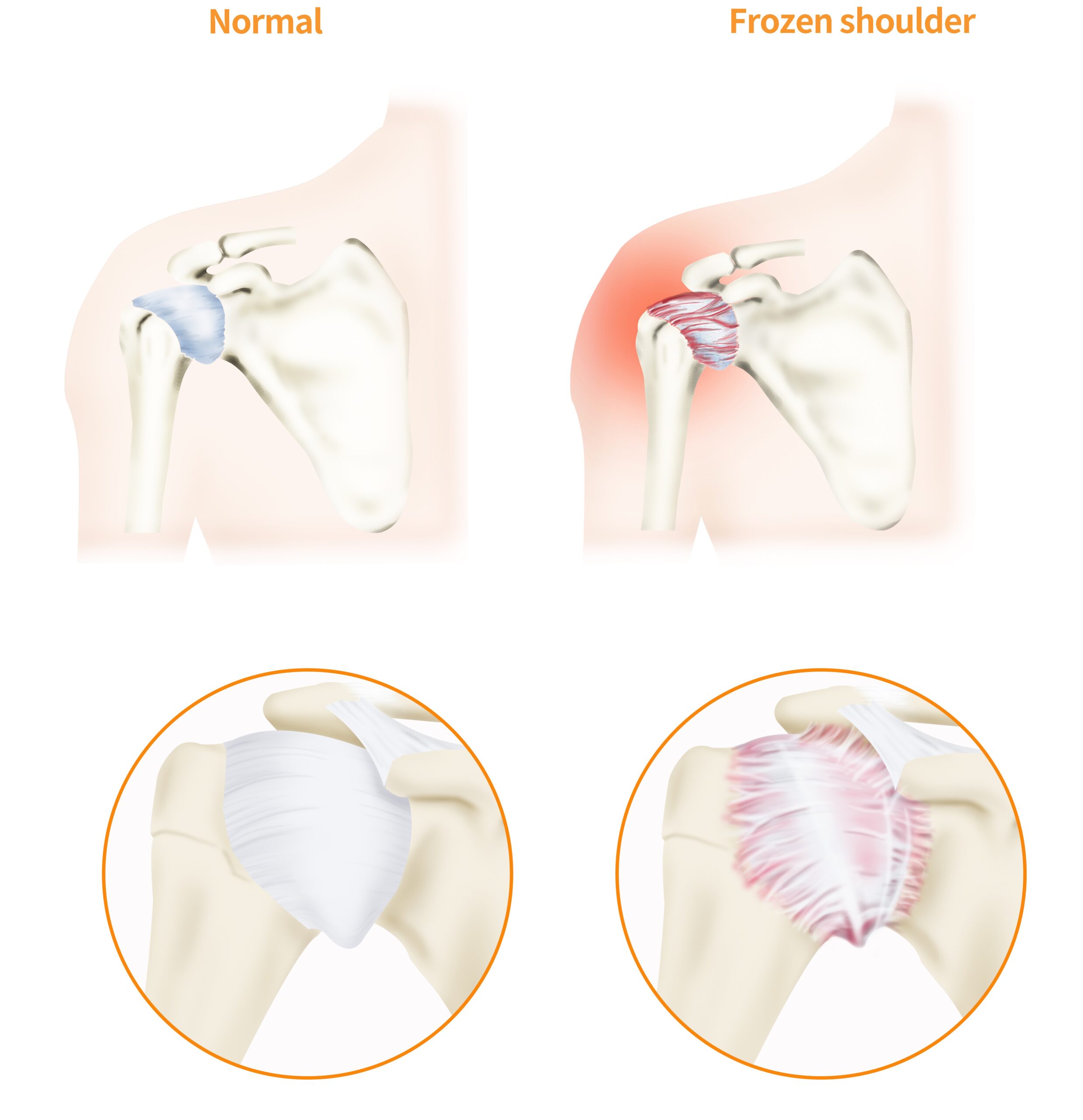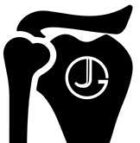If you’ve been suffering from a frozen shoulder, you’ll know what a very unpleasant experience it is. Frozen shoulder (a.k.a. ‘adhesive capsulitis’) is a condition that causes severe pain and restriction in the movement of the shoulder. It can be very debilitating and really interfere with your sleep. Even simple movements such as combing your hair or getting dressed can be a challenge.

The shoulder is surrounded by a strong, thick sac called the capsule. For reasons we don’t understand, the capsule may become inflamed and then it contracts down around the joint, making it very difficult to move. Sometimes a frozen shoulder can be sparked off by trauma or surgery, and sometimes it may be linked to thyroid conditions and diabetes, but the majority of the time it just comes on out of the blue.
You’re more like to get a frozen shoulder if you’re female and over 40.

If you have a frozen shoulder these stages of the progression of the condition may be familiar to you:
1) Freezing. Most patients have a shoulder pain that gets gradually worse, it makes sleeping difficult, and the range of movement starts to become restricted. The pain may be at its worst at night-time, and this phase can go on for many weeks.
2) Frozen. This is when the shoulder becomes mechanically very stiff, but the good news is that you may find that the pain starts to reduce or disappear completely. Your shoulder is likely to remain stiff for several months.
3) Thawing. Very gradually, over time, the range of movement in your shoulder will start return, and in most patients the movement recovers very well and the pain dissipates.
Overall, this ‘journey’ of a frozen shoulder can take several months – many patients will experience difficulty with their shoulder for 2 years and sometimes longer.
It’s very possible to make a diagnosis of frozen shoulder from the history that you tell me and how the shoulder behaves when I examine you, but because other conditions can also cause pain and limitation of the range of movement of the shoulder (e.g. arthritis), an MRI scan or x-ray of the shoulder may be carried out, to confirm the diagnosis.
If everything you’ve read so far about frozen shoulder sounds depressing, there is good news.
Painkillers, physiotherapy and osteopathy will go some way to helping your symptoms.
Some patients may have symptom improvement with an injection procedure called a Hydrodilatation. It doesn’t change the long term outcome of the condition, but it may help to get your shoulder moving better in the early stages.
For some people, the condition is so debilitating, that surgery may be advised.
Surgery will be either: a manipulation of the shoulder under a general anaesthetic to release the frozen shoulder as demonstrated in the diagram below; or a surgical release of the frozen shoulder.
This is day-case, keyhole (‘arthroscopic’) procedure in which two or three very small incisions are made around the shoulder, and the contracted capsule can be gently released.
Both operations have equally good outcomes around 85% of people do very well. In around 15% of patients, the shoulder may refreeze after the surgery. If that were to happen, further surgery can still improve symptoms significantly.

You will come into hospital and go home on the same day. You will have a general anaesthetic, and to make sure you are very comfortable when you wake up, we may carry out a nerve block procedure that will leave your arm numb for several hours. You’ll be given a sling for comfort and be seen by a physiotherapist who will assist you in getting your shoulder moving.
When you leave hospital, I want you to use the shoulder from the get-go, to hold on to the new range of movement. Rehab in the form of physiotherapy or osteopathy will help you to strengthen the muscles around the shoulder and restore the normal muscle firing patters.
I know how distressing shoulder pain can be, and frozen shoulder is particularly distressing, especially if you’ve suffered from it more than once.
If you’re struggling with shoulder pain, stiffness or loss of movement, please don’t hesitate to get in touch.
The image on the left is a normal shoulder and the image on the right demonstrates the thickened red capsule of a frozen shoulder being released.


